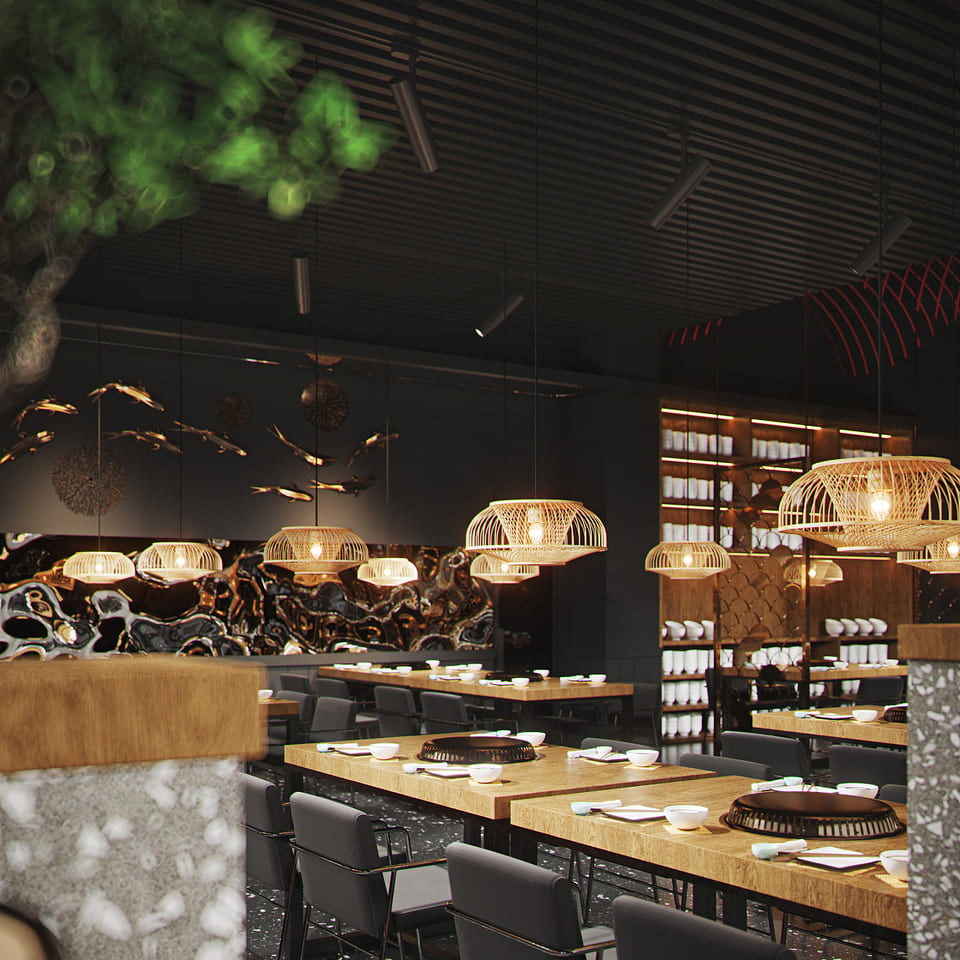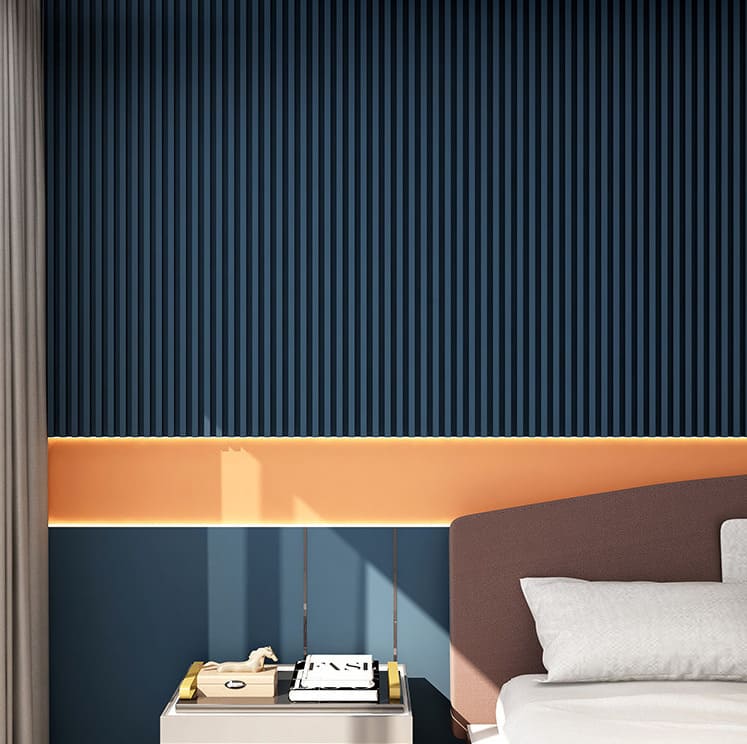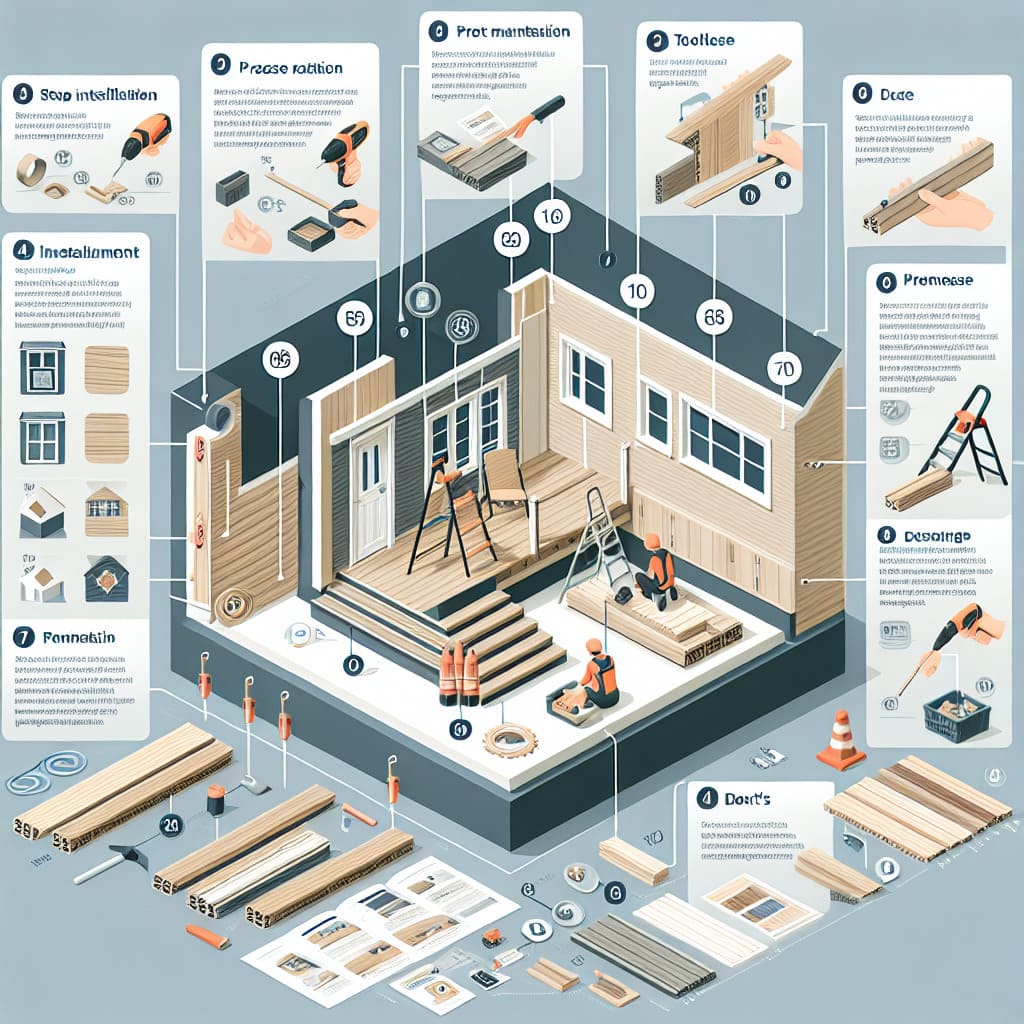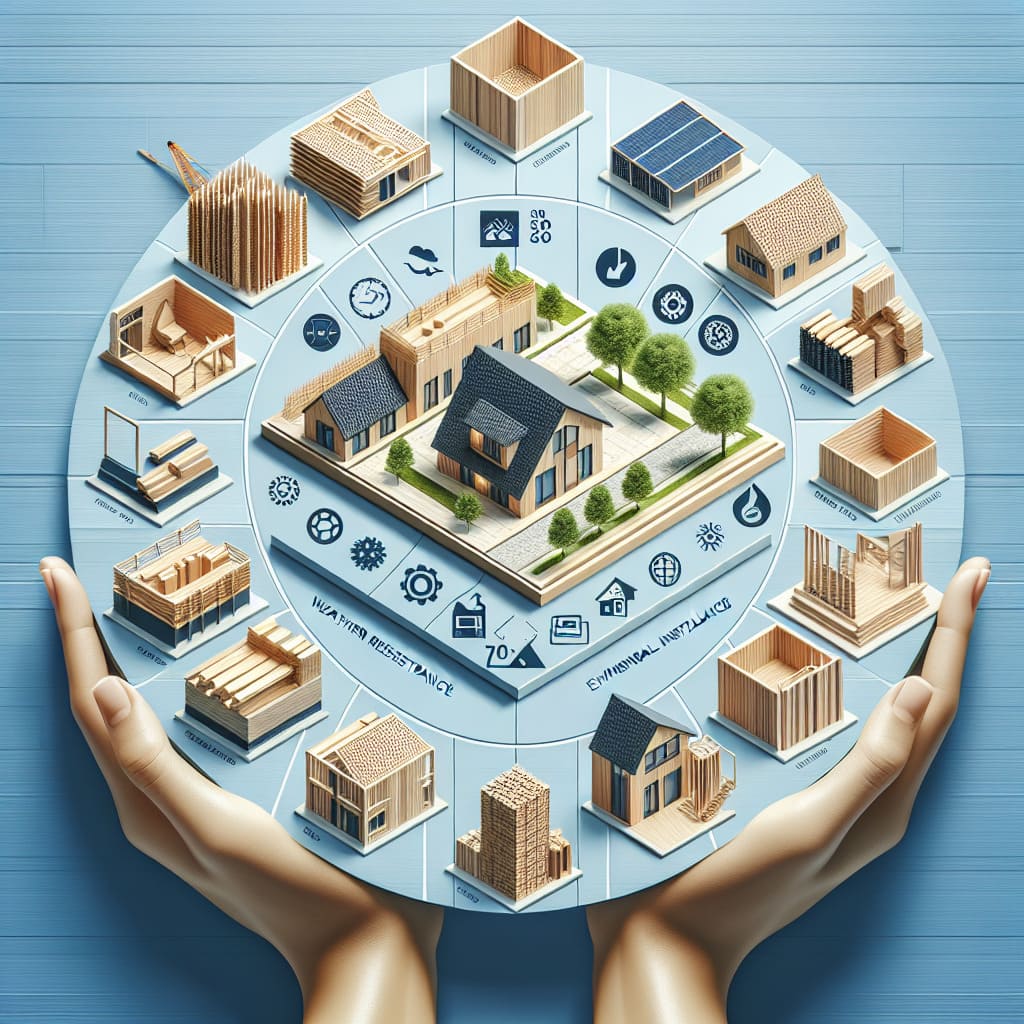In the ever-evolving landscape of modern construction, WPC (Wood-Plastic Composite) cladding has emerged as a transformative material, seamlessly blending nature's resilience with technological innovation. This section aims to provide a foundational understanding of WPC cladding and its pivotal role in shaping contemporary architectural endeavors.
WPC cladding stands as a testament to the fusion of wood and plastic, crafting a material that transcends the limitations of traditional construction components. It serves as an external layer, shielding structures from the elements while offering a visually appealing façade. The unique characteristics of WPC cladding make it a dynamic choice for architects, builders, and homeowners seeking a harmonious balance between aesthetics and functionality.
The popularity of WPC materials, including cladding, has witnessed a remarkable upswing in recent years. As sustainability and versatility take center stage in construction practices, WPC has become a go-to solution. Architects and designers are increasingly drawn to its adaptability, unlocking new possibilities for creative expression while addressing environmental concerns. This surge in popularity reflects a paradigm shift towards materials that not only withstand the test of time but also contribute to a greener and more sustainable future.

WPC cladding, at its core, is a composite material that marries the strength of wood fibers with the resilience of plastic. This section delves into the intricate details of WPC cladding, offering insights into its composition, manufacturing process, and the eco-friendly advantages that define its appeal.
WPC cladding is an exterior covering that combines wood fibers and plastic polymers, creating a robust and aesthetically pleasing composite material. As a versatile solution, WPC cladding can emulate the warmth and texture of natural wood while surpassing its traditional counterpart in terms of durability and weather resistance.
Wood Fibers and Plastic: The composition of WPC cladding typically comprises a carefully balanced mix of wood fibers, sourced sustainably, and plastic polymers. This combination harnesses the best attributes of both materials, resulting in a product that exhibits the natural charm of wood with enhanced durability.
Extrusion and Molding: The manufacturing process involves extrusion, where the wood-plastic mixture is shaped into the desired profile. Molding techniques then create the final cladding product, allowing for a range of design possibilities.
Recyclability: WPC cladding aligns with sustainable practices as it often incorporates recycled materials, reducing the demand for virgin resources.
Reduced Environmental Impact: The manufacturing process of WPC cladding tends to have a lower environmental impact compared to traditional materials, contributing to a more eco-conscious construction approach.
Longevity and Low Maintenance: WPC cladding's durability translates into an extended lifespan, reducing the need for frequent replacements and minimizing environmental strain. Additionally, its low maintenance requirements further enhance its sustainability profile.
As we journey deeper into the realm of WPC cladding, subsequent sections will unravel its advantages, potential drawbacks, and real-world applications, providing a comprehensive guide for those navigating the intricacies of modern construction materials.

WPC cladding, at the forefront of modern construction materials, boasts a spectrum of key features that position it as a compelling choice for architects and builders alike. This section delves into the core attributes that define WPC cladding, emphasizing its durability, low maintenance, and design versatility.
WPC cladding stands as a stalwart defender against the forces of nature. Its inherent durability shields structures from the impact of weather elements, including rain, sunlight, and temperature fluctuations. This resilience ensures that WPC cladding retains its integrity over time, maintaining its aesthetic appeal and structural soundness.
In the realm of construction, maintenance is a crucial consideration. WPC cladding excels in this regard, demanding minimal upkeep compared to traditional materials. The low maintenance requirements translate into both time and cost savings, making it an attractive option for those seeking an efficient and sustainable exterior cladding solution.
Creativity finds boundless expression in WPC cladding's versatility. The material offers a diverse range of design options, allowing architects and designers to unleash their imagination. From an array of colors to varied textures, WPC cladding provides a canvas for innovative and customized exterior aesthetics, ensuring that every project can achieve a distinct and personalized look.

WPC cladding sets itself apart through a multitude of advantages when compared to traditional cladding materials. This section conducts a comparative analysis, shedding light on how WPC excels in terms of resistance, cost-effectiveness, and long-term value.
Resistance to Decay: Unlike wood, which is susceptible to decay over time, WPC cladding resists the ravages of fungi and other deteriorating agents.
Insect Resistance: WPC cladding stands as a formidable barrier against insects, addressing a common issue faced by those who opt for wooden cladding.
Warping Resistance: WPC cladding remains impervious to warping, a concern often associated with both wood and metal cladding.
Decay Resistance: WPC cladding outshines traditional materials like wood, offering enhanced resistance to decay and rot.
Insect Resistance: The composition of WPC makes it unattractive to insects, ensuring that structures clad with WPC remain free from pest-related concerns.
Warping Resistance: Unlike materials prone to warping, such as wood, WPC cladding maintains its structural integrity even when subjected to varying environmental conditions.
Initial Cost: While the initial cost of WPC cladding might be slightly higher than some traditional materials, its long-term value and reduced maintenance costs contribute to cost-effectiveness over the life of the structure.
Longevity: The durability of WPC cladding translates into a longer lifespan, minimizing the need for frequent replacements and associated costs.
In the dynamic world of exterior cladding, WPC emerges as a material that not only meets but exceeds expectations. As we progress through this exploration, subsequent sections will delve deeper into the applications of WPC cladding and provide a comprehensive understanding of its real-world benefits.

WPC cladding, with its versatility and durability, has found a diverse array of applications in both residential and commercial settings. This section illuminates the real-world applications of WPC cladding, offering insights through compelling examples and case studies that underscore its success.
Residential Exteriors: WPC cladding has been embraced for residential exteriors, adorning homes with a timeless and low-maintenance aesthetic. Case studies will showcase how WPC cladding enhances curb appeal while standing resilient against the elements.
Commercial Facades: In the commercial realm, WPC cladding has transformed facades, contributing to the modern and eco-friendly image of businesses. Examples will highlight how WPC cladding elevates the visual identity of commercial spaces.
Public Spaces: From parks to public buildings, WPC cladding has been employed to create inviting and enduring spaces. Case studies will spotlight how WPC cladding contributes to the longevity and attractiveness of public structures.
Residential Versatility: Explore how WPC cladding adapts to various architectural styles in residential settings. From traditional to contemporary, the material's versatility ensures it seamlessly integrates into diverse home designs.
Commercial Flexibility: The adaptability of WPC cladding in commercial applications will be showcased. Whether used in corporate offices, retail spaces, or hospitality venues, WPC cladding proves its versatility in enhancing the visual appeal of different commercial environments.

Practical guidance is paramount when it comes to the successful installation and maintenance of WPC cladding. This section provides valuable tips and insights to ensure a seamless process from installation to long-term upkeep.
By understanding the practical applications of WPC cladding and implementing proper installation and maintenance practices, homeowners, architects, and builders can harness the full potential of this innovative material. As we progress, subsequent sections will unravel the environmental sustainability of WPC cladding and explore its future trends in the dynamic realm of construction and design.

In an era marked by a growing commitment to sustainable practices, WPC cladding emerges as a frontrunner in the realm of environmentally conscious construction materials. This section delves into how WPC cladding contributes to environmental sustainability, placing a spotlight on its recyclability and eco-friendly attributes.
Recyclability: WPC cladding is crafted with an eco-conscious approach, often incorporating recycled materials in its composition. This not only reduces the demand for virgin resources but also minimizes the environmental footprint associated with traditional cladding materials.
Reduced Environmental Impact: The manufacturing process of WPC cladding generally entails a lower environmental impact compared to traditional materials. This reduction in resource consumption and energy use aligns with contemporary goals of mitigating environmental harm.
Longevity and Low Maintenance: The durability of WPC cladding translates into an extended lifespan for structures, reducing the need for frequent replacements. This longevity, coupled with the material's low maintenance requirements, contributes to a more sustainable construction approach.

While WPC cladding boasts numerous advantages, it is essential to acknowledge potential disadvantages to provide a comprehensive understanding. This section explores specific drawbacks, emphasizing sensitivity to heat and initial cost considerations.
Heat Sensitivity: WPC cladding may exhibit sensitivity to high temperatures, necessitating precautions in regions with extremely hot climates. Understanding this characteristic is crucial to ensuring the material's optimal performance and longevity.
Preventive Measures: To mitigate the effects of heat sensitivity, consider implementing preventive measures such as adequate shading, proper ventilation, or exploring alternative cladding solutions in areas prone to intense heat.
Higher Initial Cost: It's important to acknowledge that the initial cost of WPC cladding might be slightly higher than that of some traditional materials. This consideration is particularly relevant for budget-conscious projects.
Long-Term Value: Despite the higher initial investment, the long-term value of WPC cladding, including reduced maintenance costs and enhanced durability, often outweighs the upfront expenses, contributing to cost-effectiveness over time.

WPC cladding emerges as a commendable choice in the realm of construction materials, offering a host of advantages along with considerations that warrant attention. A balanced assessment of the overall goodness of WPC cladding necessitates a comprehensive understanding of its strengths and potential drawbacks.
In revisiting the advantages, it becomes evident that WPC cladding excels in terms of durability, low maintenance, and versatile design options. Its ability to resist decay, insects, and warping positions it as a resilient choice for exterior applications. However, a nuanced evaluation acknowledges that no material is without its drawbacks.
Sensitivity to heat, especially in extremely hot climates, is a notable consideration. Understanding this characteristic allows for informed decision-making, incorporating preventive measures to ensure optimal performance. Additionally, while the initial cost of WPC cladding may be slightly higher than some traditional materials, the long-term value and reduced maintenance costs often outweigh the upfront investment.
The suitability of WPC cladding for different projects is influenced by a myriad of factors. Considerations such as project type, climate, and budgetary constraints play pivotal roles. Residential projects benefit from WPC's versatility and low maintenance, while commercial structures find value in the material's visual appeal and environmental sustainability.
The adaptability of WPC cladding allows it to seamlessly integrate into various architectural styles, contributing to the success of projects with diverse design goals. By aligning the characteristics of WPC cladding with the specific needs of each project, builders and designers can harness its benefits effectively.

The comparison between WPC and natural wood involves a nuanced evaluation that considers practical aspects, aesthetic preferences, and specific project applications.
In weighing WPC against wood, the advantages of the former in terms of resistance to decay, insects, and warping are apparent. WPC's ability to emulate the natural beauty of wood while overcoming some of its inherent challenges positions it as a strong contender. However, aesthetic considerations play a crucial role, and projects that prioritize the authentic look and feel of natural wood may lean in favor of the traditional material.
Specific applications within a project, especially those exposed to moisture or varying environmental conditions, may dictate the superiority of WPC over wood. The nuanced evaluation recognizes that the decision between WPC and wood depends on a careful consideration of these factors.

In conclusion, the exploration into WPC cladding reveals a material that offers a harmonious blend of aesthetic appeal, sustainability, and resilience. The comprehensive assessment of its advantages, considerations, and comparison with wood equips decision-makers with the insights needed to make informed choices in construction and design projects.
Readers are encouraged to carefully weigh the unique benefits of WPC cladding in light of their project requirements. By doing so, they embark on a path towards not only creating visually appealing structures but also contributing to a sustainable and resilient built environment. As construction practices evolve, WPC cladding stands as a testament to the industry's commitment to innovative, eco-friendly, and enduring solutions.
